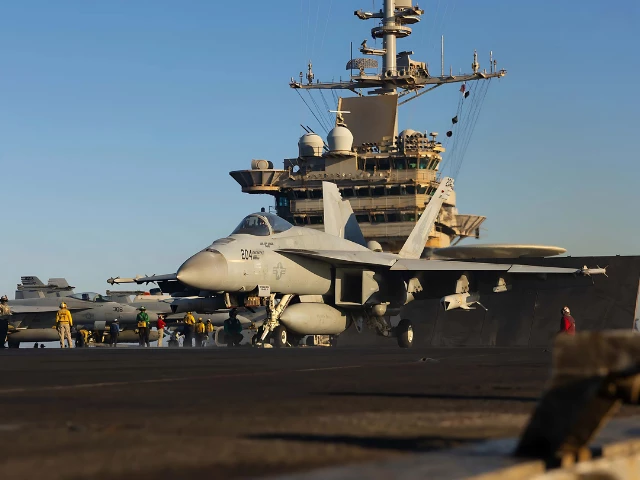Another US fighter jet lost from USS Truman in Red Sea
Second F/A-18 from USS Truman crashes in Red Sea; crew ejects safely

For the second time in just over a week, an F/A-18 Super Hornet from the USS Harry S. Truman has crashed into the Red Sea during carrier operations, raising serious concerns about the troubled deployment of the US Navy aircraft carrier.
As first reported by CNN, the jet was lost following what appears to have been an arrestment failure while attempting to land on the carrier.
Both the pilot and the weapons systems officer ejected and were recovered by a rescue helicopter. They sustained minor injuries but are in stable condition.
The jet, which went down into the sea, has not yet been recovered. An investigation is underway to determine the exact cause of the crash.
Complicating matters, the Iran-backed Houthi rebels reportedly "took a shot" at the Truman on Tuesday, just hours after U.S. President Donald Trump announced a purported ceasefire with the group.
It remains unclear if the attempted attack and the crash are connected. The Office of the Secretary of Defense referred inquiries to the Navy and CENTCOM, both of which have yet to comment publicly.
This marks the second fighter jet lost from the Truman in as many weeks. The earlier incident occurred during what was described as a hard evasive maneuver to avoid Houthi missile fire, which contributed to a jet falling overboard.
Each F/A-18 Super Hornet carries a price tag of more than $60 million.
The Truman’s deployment has been marred by repeated operational setbacks. In December, another F/A-18 from the carrier was mistakenly shot down by the USS Gettysburg, and in February, the Truman collided with a merchant vessel near Egypt in the Mediterranean.
The string of mishaps led to the removal of Captain Dave Snowden, who was replaced by Captain Christopher Hill.
U.S. naval forces in the Red Sea have been under constant threat since the Houthis began targeting commercial and military vessels in late 2023. The situation remains tense as both the geopolitical and mechanical challenges continue to mount.




















COMMENTS
Comments are moderated and generally will be posted if they are on-topic and not abusive.
For more information, please see our Comments FAQ